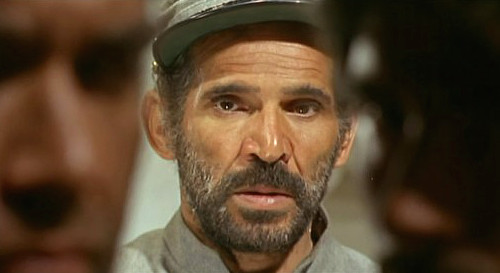#Paolo Bianchini
Explore tagged Tumblr posts
Text










Lo voglio morto (I Want Him Dead, 1968)
"If the Confederates and the Yankees sign a truce, the two of us are ruined!"
"And so?"
"So, they have to keep killing each other until we've sold everything. Everything, right down to the last cartridge!"
#lo voglio morto#i want him dead#spaghetti western#italian cinema#paolo bianchini#carlos sarabia#1968#craig hill#lea massari#josé manuel martín#andrea bosic#licia calderón#andrea scotti#federico boido#josé canalejas#cristina businari#frank braña#francisco nieto#remo de angelis#josé riesgo#moody and fatalistic but stylishly shot italian spanish coproduction. director Bianchini favours tight close ups and low angles to sell his#tale of corruption and waste in the dying days of the american civil war; the vibe is brilliantly captured‚ it's all battle weary desperate#ppl in a scarred and broken land‚ but i do wish our hero hadn't been allied so clearly with the Confederates. that's the main issue here‚ a#persistent element of nihilism which does sometimes display itself through uncomfortable attitudes on race (background characters in more#than one scene speak derisively of black people‚ despite none appearing in the film). that's a shame bc the plot here is strong‚ with a#clear anti capitalist tone struck from the beginning. idk it's all just so pessimistic but then ends on a really improbable happy note for#our hero (a very good Hill‚ whose steely eyes are showcased in many a loving closeup) and his girl (Massari‚ who fares much better than#women often do within this genre: she has plenty of screentime‚ a developed character‚ and makes it out alive)#idk im torn on this. it's a very handsomely shot film and more intelligent than many other of its era but that nagging tone of#callous disinterest kept me from really loving it.
2 notes
·
View notes
Text
Dodici mesi, dodici buoni propositi a tavola per il 2025: i consigli dell’esperto, Paolo Bianchini
a cura della redazione Le feste sono terminate ed è il momento di dare seguito ai buoni propositi, anche a tavola. Un consiglio al mese per migliorare il nostro rapporto con il cibo e la salute, partendo dal rispetto degli orari alla mindful eating, passando per combinazioni intelligenti e condimenti di qualità. Ecco i suggerimenti pratici per un’alimentazione consapevole tutto…
0 notes
Text






100 anni di Radio in Italia! Il mese di ottobre 2024 segna una tappa storica: il centenario della radio italiana. Da un secolo, la radio continua a evolversi, attraversando epoche e tecnologie, restando un pilastro insostituibile nella diffusione di cultura, musica, notizie e nella creazione di comunità. Usmaradio celebra questo importante anniversario con una serie di iniziative radiofoniche e culturali che abbracciano la contemporaneità e guardano al futuro Under the Label – Un viaggio tra le trame della musica contemporanea L'11 ottobre ha dato il via alle celebrazioni con la trasmissione del primo episodio di "Under the Label", il nuovo programma radiofonico di Andreij Rublev, aka Andrea Gava. Ogni due settimane, il venerdì alle 21:00, Rublev ci guida in un viaggio sonoro attraverso la musica contemporanea, underground, indipendente e sperimentale. Il programma esplora le nuove tendenze musicali e le contaminazioni tra generi, che stanno ridefinendo il panorama sonoro globale. Un'occasione per riflettere sull'evoluzione della musica nell'era digitale, ascoltando suoni che spesso sfuggono ai circuiti tradizionali ATLAS: un viaggio inedito tra geografie elettromagnetiche Il duo elettronico L'Impero della Luce ha trasmesso, in anteprima mondiale su Usmaradio il 17 ottobre, la loro ultima fatica: "ATLAS - Cartografie uditive di continenti immaginari". Un progetto unico nel suo genere, che trasforma le frequenze elettromagnetiche di luoghi reali – una fabbrica, un bunker, una mostra, un centro di ricerca radiofonica, quello di Usmaradio – in composizioni sonore. Le sette tracce di ATLAS fanno emergere mondi sonori invisibili, rendendo udibili quelle frequenze normalmente inaccessibili all’orecchio umano. Un lavoro concepito non come prodotto discografico, ma come un'esperienza d’ascolto esclusiva via radio e web radio
Le Parole di ASC – Un weekend di riflessione e dialogo Dal 25 al 27 ottobre, Usmaradio è ospite dell'evento "Le Parole di ASC" a Rimini, una manifestazione che esplora temi chiave come pace, cittadinanza attiva, scuola, formazione e futuro, organizzata da Arci Servizio Civile. Il direttore di Usmaradio, Roberto Paci Dalò, interverrà con "Centuria", concerto basato su materiali da archivi radiofonici. Inoltre, Usmaradio curerà una selezione musicale, in palinsesto e ascoltabile globalmente, per una delle serate degli incontri
BIOMA Festival: tre sessioni di musica radicale Nei giorni scorsi abbiamo annunciato la prima edizione di BIOMA Festival - musiche radicali, un evento che porta la sperimentazione sonora all'Università degli Studi della Repubblica di San Marino, in collaborazione con Unirsm Design. Il festival si articolerà in tre sessioni (6 novembre, 21 novembre e 4 dicembre), portando a San Marino alcuni tra gli artisti più innovativi della scena internazionale. Robert Lippok aprirà il festival il 6 novembre, seguito da Paolo Bragaglia, Giacomo Piermatti e Francesco Poggianti il 21 novembre, e chiuderà il 4 dicembre con Fabrizio Modonese Palumbo, Giulia Barba e il Sidera Saxophone Quartet (Michele Selva, Gianpaolo Antongirolami, Michele Bianchini, Daniele Berdini). Un evento unico, che esplora la sperimentazione sonora attraverso l’intersezione di strumenti acustici, voce ed elettronica
Sentire le Voci – Il festival del podcast a Cesenatico Dall'8 al 10 novembre, Usmaradio è media partner ufficiale di Sentire le Voci, la festa del podcast di Cesenatico. La seconda edizione del festival vedrà la partecipazione di grandi nomi del panorama italiano del podcasting, tra cui Federico Buffa, Dario Fabbri, Daniele Tinti, Maurizio Carucci, Alberto Grandi, Mauro Pescio, Matteo Caccia, Antonio Iovane, Chiara Galeazzi, Elena Bizzotto, Veronica Raimo, Marta Cagnola, Francesca Sofia Novello, Ciccio Lancia e altri ospiti. Tutti gli interventi saranno registrati e successivamente disponibili in formato podcast e nel flusso radiofonico di usmaradio.org
📡 Tanti auguri, radio! Oggi, a 100 anni dalla sua nascita, la radio non ha mai smesso di innovarsi e vivere, più vitale e presente che mai! 🎂📻
0 notes
Text
Dr. Paolo Bianchini explains how to make cakes and desserts that are delicious – and don't spike insulin levels
http://dlvr.it/T9ttDz
0 notes
Text
§ 3.431. Lo quiero muerto (Paolo Bianchini, 1968)

Un Spaghetti Western de los de verdad. El mismo "Saloon", los mismos malos, la misma venganza, la misma música. Un director para mi desconocido, que no hace mal lo que hace. Tiene pulso y garbo la historia. Un metraje muy comedido, 83 minutos son suficientes para contar esta historia, por otra parte tantas veces vista.
Tiene la tensión bien organizada, pero le falta la profundidad que tienen otras obras mayores del género. Rodada en Almería, como tantas de aquellas época.
Una película hecha para Craig Hill, un actor más que interesante, que fue pareja y luego marido de Teresa Gimpera, una excelente actriz catalana. Guapo, varonil, alto sin estridencias, algo plano en sus movimientos y poco expresivo. Pero funciona. No quizá para papeles dramáticos, pero sí para este tipo de cine.
0 notes
Text
COSA SUCCEDE A BERGAMO

Proseguono gli eventi a Bergamo e nella provincia orobica: di recente, quella bergamasca, è tornata a essere l'ideale epicentro di eventi di rilievo per ciò che riguarda la società "dissidente"...
Iniziamo da venerdì 29 marzo quando al Circolo ARCI "Al Bafo" di Seriate si esibirà la "Combat Band", un quartetto di musicisti che durante il periodo del "green pass" ha allietato i pomeriggi dei manifestanti bergamaschi nell'ora dell'aperitivo in piazza.
Il gruppo eseguirà motivi di cantautori italiani come De Andrè e Battisti, e di altri cantanti italiani e stranieri che non si sono uniformati alla narrazione pandemica, come Ruggeri e Clapton.

Il mese di aprile si apre con un appuntamento da non perdere il 6 al Teatro del Borgo di Ranica.
Si dibatterà sui cosiddetti vaccini con relatori quali Paolo Bianchini (nutrizionista), l'Avvocato Roberto Mastalia, il Medico Legale Dario Miedico e la mamma di un bimbo che ha avuto danni dall'inoculazione. Il dibattito avrà per titolo e sotto-titolo "Scelta consapevole - Dalla legge Lorenzin al Covid" ed è organizzata dal Comitato "Uniamoci".

Sabato 12 aprile, presso l'Auditorium dell'Oratorio "San Francesco" di Bergamo, si parlerà della "Generazione Erasmus" e di come la pandemia abbia influito sui giovani. La serata, organizzata dall'Associazione "Noi il Popolo Bergamo", inizierà alle 20.30 e verrà aperta dal Presidente Andrea Farhat e vedrà la partecipazione di ospiti di rilievo come Paolo Borgognone (storico e saggista, Paolo Cesaretti (docente e Professore Universitario), del Professor Francesco Sacconi e di Martina Locatelli dell'Associazione "Germina".

Due appuntamenti di rilievo nello stesso quartiere della città e nello stesso auditorium riguardano "Nomofobia", con l'introduzione del Consigliere Comunale Filippo Bianchi e relatore Gianfranco Amato di "Giuristi per la Vita", e l' "Associzione Saras" con il convegno di Giuliano Falciani che tratterà di "Il piano di salvezza e la grande selezione".
Il primo si terrà il 15 aprile alle 20.45,

e il secondo il 21 aprile alle 14.30.

Per entrambi il luogo è all'Auditorium della Biblioteca di Colognola "San Sisto" in via Carlo Alberto, angolo Via della Vittoria 1 a Bergamo.
0 notes
Text

BIANCHINI Paolo. L'invincible Superman (Superargo contre les robots). 1968.
0 notes
Text

Superargo and the Faceless Giants (1968) dir. Paolo Bianchini
8 notes
·
View notes
Text

Il messaggio della mia amica mi fa ricordare dell'indignato Nicola Ferrelli che si lamentava che non riusciva a trovare personale non perché non ci fossero candidature ma perché “osavano” chiedere a quanto ammontava lo stipendio e per quante ore si lavorasse. Ma i casi sono parecchi, in cui imprenditori anche (e soprattutto) rinomati si lamentano di “questi” che vengono a chiedere informazioni.
I gruppi di Facebook poi sono una fonte preziosa di queste testimonianze, ricordo l'annuncio dell'albergatore a Pietrasanta:

E ho anche letto parecchio, sempre su vari gruppi Facebook, di persone che avevano il timore di chiedere dello stipendio e di quante ore di lavoro si trattasse. Come se non fosse un proprio diritto. Ma su questo piano posso parlare anche a livello personale. Lavoravo in una rosticceria gestita da una mia mezza parente. A parte la paga misera (280 euro al mese, nessun contratto, abbiamo dovuto pagarci di tasca nostra il certificato HACCP; due sole domeniche libere e dopo chiese anche che venissimo tutte le domeniche esclamando "tanto noi ve le paghiamo" come se ci stesse facendo un favore a noi banconiste - che in realtà facevamo di tutto, dalle pulizie, alla cassa, al cucinare il cibo -) ricordo la vergogna che provavo quando puntualmente la datrice di lavoro si “dimenticava” i soldi e dovevo chiederglieli, come se non meritassi quei soldi, come se non mi li fossi guadagnata, come se non ci avessi buttato tempo ed energie appresso. Ricordo anche l'umiliazione di essere tornata in rosticceria dopo essermi licenziata per prendermi gli ultimi 15 euro di stipendio che doveva darmi, soldi che non mi diede nemmeno lei di persona ma la figlia allora adolescente.
Leggo un articolo del Fatto Quotidiano in cui lo dice chiaramente: “il datore di lavoro e il direttore del personale hanno paura di legittimare il candidato a richiedere una retribuzione più alta” mettendo annunci ambigui o appunto dove non viene specificato lo stipendio, ore di lavoro, tipo di contratto. Articolo in cui, poi, viene anche specificato del perché certi imprenditori, spesso per visibilità, si lamentano di non trovare personale:
“All’Inps risultano 368mila assunzioni stagionali da maggio a luglio, dato già di per sé sufficiente a smentire sia le previsioni catastrofiste delle rappresentanze imprenditoriali sia le tante dichiarazioni sulla presunta mancanza di candidati”, racconta Danzi. “Come se non bastasse, con il nostro giornale SenzaFiltro abbiamo scoperto come molti degli imprenditori che lamentavano carenza di personale non l’avessero minimamente cercato o, quanto meno, non lo avessero fatto sui canali adibiti a tale scopo: le piattaforme dedicate e i centri per l’impiego“. Tra loro ad esempio Paolo Agnelli, numero uno dell’omonima azienda di lavorazione dell’alluminio nonché presidente di Confimi Industria, l’organizzazione che rappresenta gli operatori del settore manifatturiero e dei servizi alla produzione. “A ottobre 2020 vari giornali hanno ripreso la sua testimonianza sulle difficoltà a reperire addetti ma da una verifica effettuata in quegli stessi giorni non è emersa alcuna offerta di impiego pubblicata dalla sua società su LinkedIn né altrove nel web, così come nessuna sezione ‘lavora con noi’ risultava disponibile sul sito istituzionale”, spiega il fondatore di FiordiRisorse. “Un fact checking analogo è stato fatto in estate anche su tanti altri nomi, da Paolo Bianchini, presidente di Mio Italia, ad Andrea Madonna, che guida la sezione veneta della stessa associazione di categoria per albergatori e operatori turistici, fino a Daniela Petraglia, presidente di ConfRistoranti Confcommercio Provincia di Pisa. E in tutti i casi l’esito è stato il medesimo: offerte di lavoro non pervenute”. Al punto che, precisa Danzi, “viene da pensare ci si basi sul semplice passaparola o su agenzie interinali locali” invece che “fare ricorso a professionisti del personale o meccanismi di selezione strutturati“. Per poi lamentare pubblicamente, forse per “desiderio di visibilità”, le presunte difficoltà a reperire personale.
Una delle poche cose buone di questa pandemia è stata proprio il fatto che molti che prima lavoravano con turni allucinanti, sono stati costretti a stare a casa e non lavorare (ad esempio commesse di negozi, soprattutto dei centri commerciali, che stavano a casa la domenica, durante le festività, chiusura anticipata). Cioè molti lavoratori, restando a casa causa lockdown, si sono ricordati di avere una vita al di fuori del lavoro e che forse avere del tempo per poter anche semplicemente riposare. Dunque risulta sempre più insopportabile per il lavoratore dover accettare certe condizioni, anche solo certi atteggiamenti da parte del datore di lavoro che si prende addirittura la libertà di lamentarsi se un candidato gli chiede della paga. Ovviamente la richiesta si è fatta più feroce e spudorata, ed i lavoratori stanno iniziando a ricordare - mi auguro, spero - che hanno dei diritti, una dignità, una vita, che prima di tutto sono delle persone e che offrono solo la propria esperienza, la propria forza lavoro non la propria vita.
81 notes
·
View notes
Video
Ariel by Italy in US Via Flickr: ARIEL Credits: Paolo Bianchini Affiliation: Nanoscopy, Fondazione Istituto Italiano di Tecnologia Title: 3D coded view of bovine retina rods by confocal laser scanning microscopy. Technical details: Confocal microscopy of rods in bovine retina, colors represent different z-planes. Motivation: Retina studies
13 notes
·
View notes
Text
Giornata mondiale dell’osteoporosi: gli alimenti meno conosciuti che fanno bene alle ossa
a cura delle redazione Domenica 20 ottobre si celebra la Giornata mondiale dell’osteoporosi. Prevenire la fragilità ossea è possibile con piccoli accorgimenti anche a tavola e corrette combinazioni. Abbiamo posto tre domande a cui ha risposto Paolo Bianchini, consulente nutrizionale e nutraceutico di Salò e autore del Metodo Bianchini. Domenica prossima, 20 ottobre, si celebra la Giornata…
0 notes
Photo

#vino e #ciclismo . Queste due grandi passioni albergano nel cuore di Paolo Bianchini, attuale proprietario, insieme alla sorella Lucia della cantina @ciaccipiccolominidaragona . La tenuta è stata donata al loro padre dall’erede della storica e nobile famiglia di cui porta il nome e che aveva individuato in lui la persona che avrebbe curato al meglio le loro vigne, reso sempre più qualitativa la loro produzione e portato il loro nome a essere conosciuto in tutto il mondo. E così fu. Questo splendido racconto, lo trovate nelle parole commosse di Paolo Bianchini all’interno del video fatto per #crurated , che questa settimana dedica la sua attenzione proprio alla zona di #montalcino . Sono infatti presenti esclusivi lotti provenienti da #ciaccipiccolominidaragona , @argiano1580 e @le_ragnaie . 3 delle cantine ilcinesi che ospiteranno questo #weekend un prestigiosissimo tour della zona dedicato a #collezionisti e #winelovers , che vede nel suo programma anche il coinvolgimento di @biondisantigreppo e @casanovadineri . Scopri di più su @cruratedofficial ➡️ www.crurated.com 🍷 ➡️ @ciaccipiccolominidaragona 👨🏫 ➡️ Paolo Bianchini 💡 ➡️ @crurator @ste.rem 📍 ➡️ #toscana #montalcino 🎤 ➡️ @chiaragiannotti__ @vino.tv 🎥 ➡️ @da_piks ———————————————— #followmywinepassion #vinotv #chiaragiannotti #vinoitaliano #winelover #collectors #sommelier #winetasting #bestwine #bestwinery #crurated #wineauction #rarewine #finewine #fineandrarewine (presso Ciacci Piccolomini D'aragona Montalcino) https://www.instagram.com/p/CjGOuiytawN/?igshid=NGJjMDIxMWI=
#vino#ciclismo#crurated#montalcino#ciaccipiccolominidaragona#weekend#collezionisti#winelovers#toscana#followmywinepassion#vinotv#chiaragiannotti#vinoitaliano#winelover#collectors#sommelier#winetasting#bestwine#bestwinery#wineauction#rarewine#finewine#fineandrarewine
0 notes
Text
Dr. Paolo Bianchini explains how to make cakes and desserts that are delicious – and don't spike insulin levels
http://dlvr.it/T9WKdZ
0 notes
Text
Doppio pacco Covid per gli italiani, la rabbia di Paolo Bianchini (MIO Italia): stangata e accanimento
Doppio pacco Covid per gli italiani, la rabbia di Paolo Bianchini (MIO Italia): stangata e accanimento
Paolo Bianchini, presidente dell’associazione di categoria MIO Italia, Movimento Imprese Ospitalità, si ribella alle mosse del governo di Mario Draghi che non viene incontro agli imprenditori nel momento in cui dichiara che il pericolo Covid non è cessato. “Doppio pacco prenatalizio, un nuovo giro di vite e una stangata, in arrivo per gli italiani. Da un lato l’entrata in vigore del Super Green…

View On WordPress
0 notes
Video
youtube
PAOLO BIANCHINI SCATENATO IN DIRETTA ▷ "PIÙ UTILI COL GREEN PASS? SOLO C....
0 notes
Text










https://m.facebook.com/story.php?story_fbid=1227101647736856&id=100013110964658
Galvanoproject
https://m.facebook.com/story.php?story_fbid=1627924170720022&id=100005073648753
GALVANOPROJECT COMUNICAZIONE : VIVETE IN UNA REALTA' MANIPOLATA
https://www.google.it/search?client=firefox-b&biw=1366&bih=659&site=webhp&q=GALVANOPROJECT+COMUNICAZIONE+%3A+VIVETE+IN+UNA+REALTA%27+MANIPOLATA&oq=GALVANOPROJECT+COMUNICAZIONE+%3A+VIVETE+IN+UNA+REALTA%27+MANIPOLATA&gs_l=serp.12...0.0.1.7558.0.0.0.0.0.0.0.0..0.0....0...1c..64.serp..0.0.0.VRsiYL5dUCA
GALVANOPROJECT DATI MANIPOLATI
https://www.google.it/search?q=GALVANOPROJECT+DATI+MANIPOLATI+&cad=h
Ecco Come Avverrà il Collasso Economico Mondiale!
https://www.youtube.com/watch?v=2zth32Oec44
http://citywire.it/news/la-banca-mondiale-emette-una-nuova-obbligazione-in-dollari/a1121604
La Banca Mondiale emette una nuova obbligazione in dollari
GALVANOPROJECT LA GRANDE TRUFFA DEL DIRITTO E DEI DERIVATI
https://www.google.it/search?q=GALVANOPROJECT+LA+GRANDE+TRUFFA+DEL+DIRITTO+E+DEI+DERIVATI&cad=h
GALVANOPROJECT RACCONTA LA FAVOLA DEGLI SCACCHI :
INIZIA IL TORNEO, TANTI I PARTECIPANTI, TANTI GLI SCOMMETTITORI. SIAMO ALLA PARTITA FINALE MA AD UN TRATTO I GIOCATORI SI FERMANO PASSANO ORE, GIORNI, SETTIMANE, MESI E GLI SCOMMETTITORI ATTENDONO CHE UNO DEI GIOCATORI FACCIA LA PRIMA MOSSA, MA AD UN TRATTO IL PRESENTATORE ANNUNCIA : RINGRAZIAMO TUTTI I PARTECIPANTI E TUTTI GLI SCOMMETTITORI MA LA PARTITA E' TERMINATA CON NESSUN VINCITORE ECCO ALLORA CHE GLI SCOMMETTITORI CAPISCONO DI ESSERE STATI TRUFFATI MA ORMAI ERA TARDI PER FARE QUALCOSA, FU IL PANICO. FORTUNATAMENTE ............
https://m.facebook.com/story.php?story_fbid=1212360429210978&id=100013110964658
Un colpo di Stato consiste nel rovesciamento — da parte di uno o più soggetti, popolari o delle élite nazionali, autonomamente o con l'appoggio diretto o indiretto di un organismo istituzionale quale per esempio le forze armate — in maniera violenta, del potere costituito, al fine di causare un mutamento di regime.
https://m.facebook.com/story.php?story_fbid=1225153961264958&id=100013110964658
Paolo Bianchini
https://www.facebook.com/bianchinimioitalia/
https://m.facebook.com/story.php?story_fbid=1225151821265172&id=100013110964658
Galvanoproject
0 notes